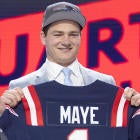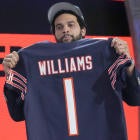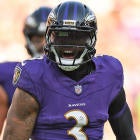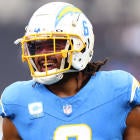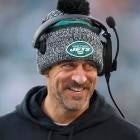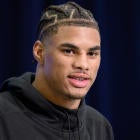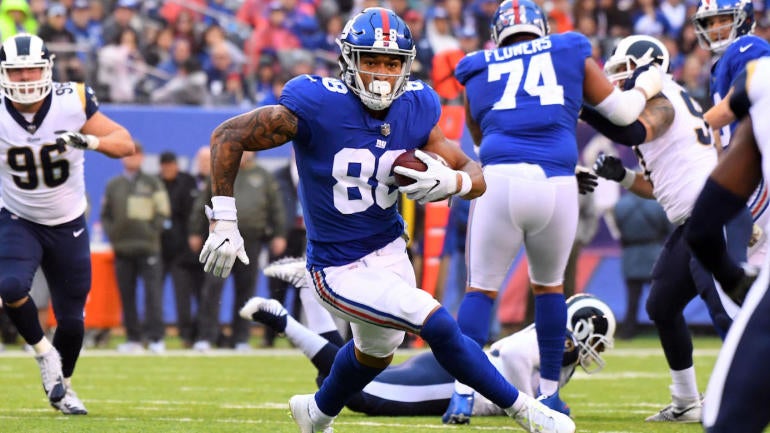
The last thing a rebuilding franchise can afford to do is trade Day 1, 2, or quite frankly even Day 3 draft picks for players. I understand why after observing how fast franchises like San Francisco and Arizona have turned things around it's hard to accept that despite being in Year 3 of the Dave Gettleman regime, the New York Giants are still a rebuilding franchise, but that's exactly what they are now.
It's also exactly what they were last season when despite owning a 2-6 record at the time, Gettleman traded a 2020 third-round pick and 2021 fifth-round pick for interior defensive lineman Leonard Williams. At the time of the trade, Williams had zero sacks through eight weeks and was set to hit unrestricted free agency in a few months. Although Williams has played well in 2020, it was a colossal mistake the Giants can't afford to repeat over the next few days prior to the 2020 NFL trade deadline.
We'll dive into who the Giants should sell in a moment, but first, let's break down why doubling down on the buyer process can't happen by looking back at the 2019 trade deadline process. Viewing the trade in a vacuum by evaluating Williams' 2020 impact -- and what he gave the Giants in a lost 2019 season -- misses the point. The flaw was in the process for Gettleman. Trading the 68th overall pick in a draft class deep with talent plus a 2021 pick for an impending free agent during a lost season is inexcusable. When you also factor in that he traded for a position that is arguably the deepest and easiest to find in the NFL (Javon Hargrave was also a free agent plus All-Pros Calais Campbell and Jurrell Casey were traded for late-round picks), the deal gets even harder to swallow.
But without a doubt, the biggest indicator of Gettleman's flawed process is that -- for what feels like the 15th time in his tenure -- he didn't factor in opportunity cost. Gettleman traded for an interior defensive lineman after inheriting arguably the best player from the previous regime (Dalvin Tomlinson), using a top-68 overall pick (B.J. Hill) and using the No. 17 overall pick (Dexter Lawrence) all on the interior defensive line. Putting aside the worthy argument that investing heavily in the run-stuffing interior defensive line is a losing play in a league that is most often decided by the obvious passing downs; the end result has been talented prospects like Hill and Lawrence relegated to around just 20 and 30 snaps, respectively, per game.
So do I trust Gettleman to get it right this time around at the trade deadline? No, of course not, but if the wise decision to trade Markus Golden for a 2021 draft pick is an indication of a man willing to change his process for the better, here are the players I would look to dangle.
Players to trade
Evan Engram, tight end
I use the terminology very loosely when it comes to classifying Engram as a tight end. And quite frankly, that's the biggest reason the Giants should look to move on from him. Ultimately, the 6-foot-3, 235-pound skill player who runs a 4.42 would be best-suited as a "big slot" receiver detached from the line of scrimmage. At the moment, the Giants continue to insist on using him as an inline tight end (for the most part), and he is a massive liability in the run game (not for lack of effort, but due to his frame). With Engram still just 26 years old, the right NFL offensive coordinator can look to buy low on a skill player who was on pace (prorated) to finish the 2019 season with 108 receptions, 1,324 receiving yards, and eight touchdowns before getting hurt. With just one year (rookie fifth-year team option) left on his contract, it's time for the Giants to move on and move forward by focusing on finding a two-way inline tight end to help them both in the run and pass game.
Golden Tate, wide receiver
It's tough to envision what exactly the Giants could get in return for Tate at this point, but as recently as Week 7, he flashed what he can still offer another offense during his 39-yard touchdown reception. The last time an NFL team traded for Tate prior to the trade deadline (Eagles with the Lions), the results weren't ideal, but an argument can be made that New York's stagnant passing game overall has played a factor in Tate's statistical struggles. Tate racked up four straight seasons of 90 or more catches (three of them where he topped 1,000 yards) from 2014-17.
Leonard Williams, defensive lineman
If you want one more reason to help you decide why Gettleman's decision to trade for Williams at the deadline last year was flawed, consider how the move shifted all the leverage to Williams and his camp in contract negotiations. As he entered the 2020 offseason as an unrestricted free agent, the Giants were forced to either pay him like one of the top-five defensive linemen in football on a long-term contract (with long-term guarantees), or settle ultimately with slapping the franchise tag on him.
Although Williams has been arguably one of the team's best players, his presence has led to limited snaps for Hill and free agent steal Austin Johnson (who has been incredibly impactful on a per-snap basis). Williams will once again be an unrestricted free agent this offseason, as will Tomlinson, and given how easy it is to find talent on the interior defensive line -- in addition to all of the other positional holes on the roster they should look to use their salary cap space on -- and the talent already on the interior (Lawrence, Hill, Johnson), the Giants would be wise to trade whichever of Tomlinson and Williams they don't plan to resign.
Players to hang on to
Kevin Zeitler, guard
There has been discussion about trading Zeitler, but he's been (by far) and away their most consistent (and best) offensive lineman this season. Second-year quarterback Daniel Jones already has a difficult enough time playing with arguably the two worst-performing offensive tackles in football and taking away his best lineman could stymie his development.
Before you give up on Daniel Jones, did you know the #Giants have PFF's dead last (Andrew Thomas) and second-to-last (Cam Fleming) graded OTs in pass pro (of 57 OTs who qualify)?
— Dan Schneier (@DanSchneierNFL) October 27, 2020
They combine to allow 57 pressures in 7 games.
The #Browns entire Oline has allowed 40 pressures.
This is not a franchise that should be looking to move on from any quality offensive linemen.
Sterling Shepard, wide receiver
Anyone who takes the painful plunge that is evaluating the All-22 coaches film of every Giants game can attest that this offense looks completely different with No. 87 on the field. Shepard is their best route-runner and his ability to create immediate separation with his releases off of the line of scrimmage allows Jones to throw confidently with anticipation. Jones needs Shepard and so do the Giants.














